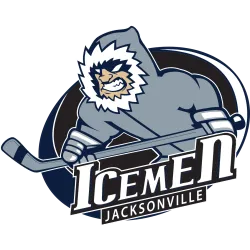What Are Some Common Causes For Discolored Paw Pads?
The well-being of our furry companions often takes center stage. One aspect of their health that deserves closer scrutiny is the condition of their precious paws, specifically the dog paw pad and cat paw pad. Discoloration of paw pads can cause concern, prompting pet owners to delve into the reasons behind these changes.

Understanding Dog Paw Pad
The dog paw pad is a resilient and essential part of a canine's anatomy. These pads provide cushioning, protection, and traction for your furry friend. However, when discoloration becomes apparent, it's crucial to investigate the potential culprits before it becomes a huge emergency.
Common Causes for Discolored Dog Paw Pads
- Environmental Factors: The surfaces dogs traverse can directly impact the color of their paw pads. Exposure to harsh chemicals, hot pavements, or abrasive surfaces can lead to discoloration. In such cases, regular paw checks and ensuring a pet-friendly environment can prevent these issues.
- Allergies and Irritants: Dogs, like people, can be sensitive to various allergens and irritants. Contact with multiple substances, such as cleaning agents or plants, may change the color of paw pads. Identifying and eliminating these triggers can alleviate the issue.
- Infections and Parasites: Fungal or bacterial infections can manifest as discoloration in paw pads. Additionally, the presence of parasites, such as mites, can contribute to changes in color. Prompt veterinary attention is essential for diagnosing and treating these conditions.
Understanding Cat Paw Pad
Though cats are recognized for their careful grooming tendencies, even the cat paw pad is susceptible to possible issues. Discoloration in these sensitive areas can indicate an array of underlying factors.
Common Causes for Discolored Cat Paw Pads
- Systemic Health Conditions: Specific systemic health conditions can manifest in changes to a cat's paw pad color. Conditions such as liver disease or circulatory problems may contribute to discoloration. Routine veterinary check-ups can help with early detection and management.
- Autoimmune Disorders: Autoimmune disorders can affect a cat's paw pads, leading to discoloration and other visible changes. These disorders involve the immune system mistakenly attacking the body's tissues. Diagnosis and treatment by a veterinarian are important in such cases.
- Dehydration and Malnutrition: Paw pads in cats may undergo discoloration due to dehydration or malnutrition. Ensuring a well-balanced diet and providing adequate hydration are fundamental aspects of maintaining a cat's overall health, including the health of their paw pads.
Addressing Dog Paw Pad Peeling
Sometimes, discoloration may be accompanied by peeling in dog paw pads. This phenomenon can be credited to a variety of causes.
- Dryness and Weather Conditions: Dry and harsh weather conditions can dehydrate a dog's paw pads, resulting in peeling. Regularly applying pet-safe paw balms and adjusting outdoor activities during extreme weather can help prevent this issue.
- Infections and Dermatological Conditions: Bacterial or fungal infections can cause dog paw pad peeling. Dermatological conditions, such as hyperkeratosis, may also contribute to this symptom. Timely veterinary intervention is essential for accurate diagnosis and treatment.
The health of our furry friends is a top priority. Discoloration in paw pads serves as a visual cue, urging pet owners to explore potential causes and take proactive measures. Whether it's environmental factors, allergies, infections, or systemic health issues, understanding the root cause is critical to ensuring the well-being of our pets.
Regular veterinary check-ups, a pet-friendly environment, and attentive care are the pillars of maintaining healthy and vibrant paw pads for your dogs and cats. Pet owners can continue to enjoy life with their furry friends by unraveling the mystery behind discoloration and addressing underlying issues. Schedule an appointment today if you have questions about paw pads or notice issues.


